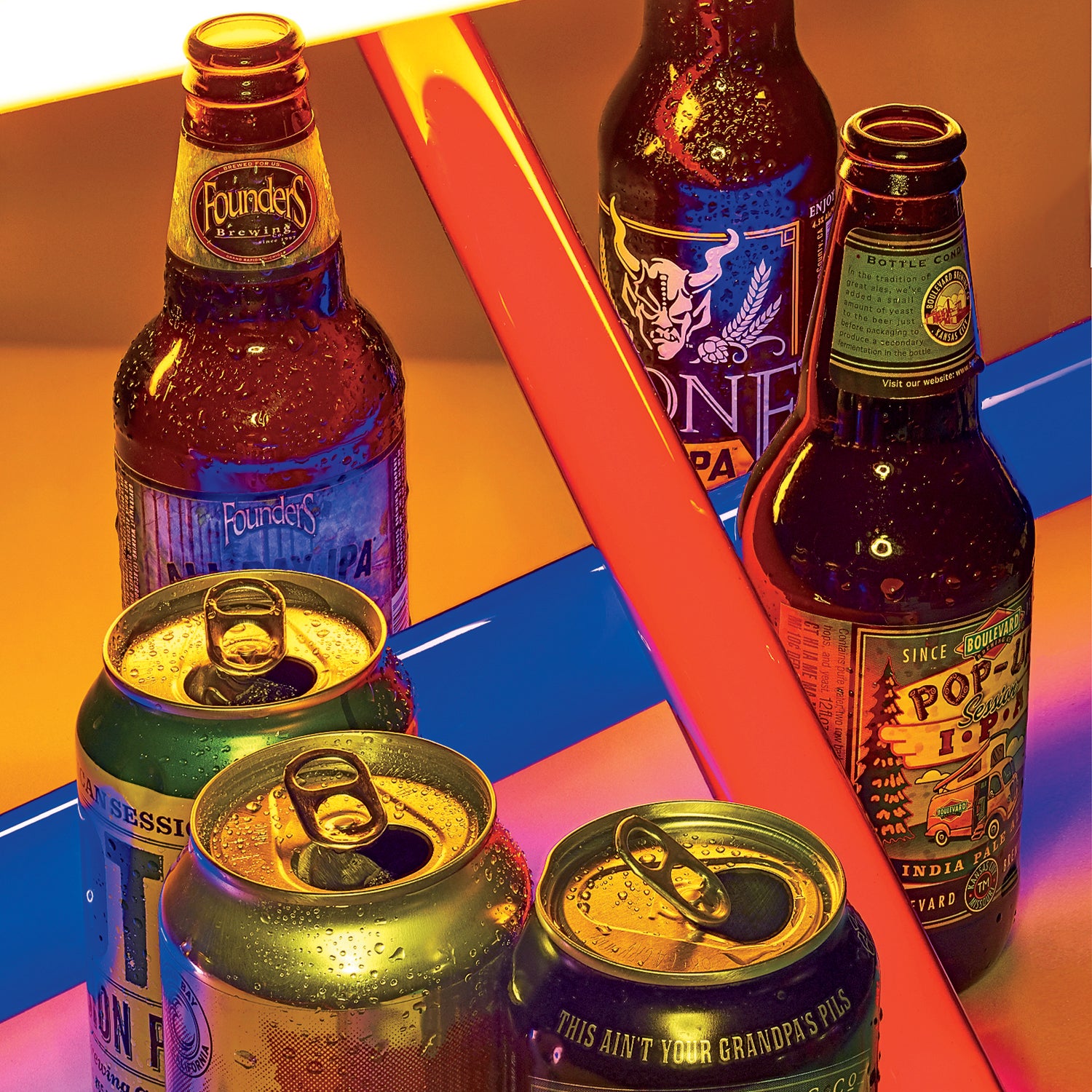There’s a new rule in beer making: it doesn’t have to knock you on your ass to be good. After 30 years of ever stronger offerings, craft breweries are producing easy-drinking, lower-alcohol suds that still have the flavor of the 6-to-10-percent stuff.
“It’s pretty hard to drink eight IPAs, then get up the next morning and surf for two hours,” says Josh Landan, one of the founders of , a San Diego brewery created by a handful of surfers, skaters, and snowboarders who wanted to make session beers—brews that register under 5 percent alcohol by volume (ABV) and can be consumed in long “sessions” of drinking. Their goal: to turn out great-tasting beers they could drink after hitting the waves or the night before a big day on the ski hill.
Although they’ve only recently become popular again, session beers aren’t new. The vast majority of the beers produced in Europe over the past several centuries have been mild ales and table beers hovering around 4 percent ABV. But once the craft-brewing movement took off in the U.S. in the 1980s and 1990s, companies began pursuing the most extreme flavors possible. And because some of those flavors required higher grain content, alcohol levels started going up, too—with some hitting ABVs of 20 percent. (German brewery makes a 57 percenter.)
In the past two years that’s changed. What started with small regional beer makers like Massachusetts-based , the first session-only outfit in the country, has expanded to powerhouses like , , and , which are known for pushing the limits of taste and ABV. There are now at least 50 breweries making session IPAs that have the same hoppy taste as their higher-ABV cousins but only half the alcohol.
According to Bart Watson, chief economist for the , that’s possible only because of the development of new kinds of hops, like the popular Mosaic strain, that can pack these beers with flavor. “Most large craft brewers came out with a session IPA last summer because of what these new hops can do,” Watson says. “They wouldn’t have bothered if they couldn’t get the flavor they wanted out of them.”
In the Office Mini Fridge
(4.7 percent)
(4.3 percent)
(4.7 percent)
(3.8 percent)
(4 percent)
(4.5 percent)
A Brief History of Ultra-Drinkable Beers
2600–2500 B.C.: Pyramid workers in Egypt are rationed ale that’s low in alcohol but high in carbohydrates and vitamins.
820 A.D.: Swiss monks start producing beers in a variety of strengths, including a strong ale made from wheat and barley for travelers,
and a weaker one made from oats for the monks themselves.
1300–1500: European laborers turn to a thick, soupy ale as a source of carbohydrates.
1776: Revolutionary War soldiers are provisioned spruce beer, thought to combat scurvy.
1922: The radler gains popularity when a German innkeeper begins mixing lemonade with pilsner to serve to thirsty touring cyclists.
1929: In Ireland, Guinness starts marketing its hearty stout (just 4.2 percent ABV) as a strength-building drink.
1980s: The new breed of craft breweries take over the industry with their higher-ABV beers.
2014: Session beers rise again.


